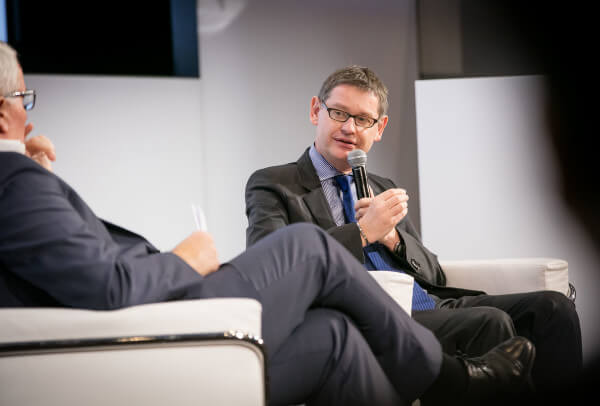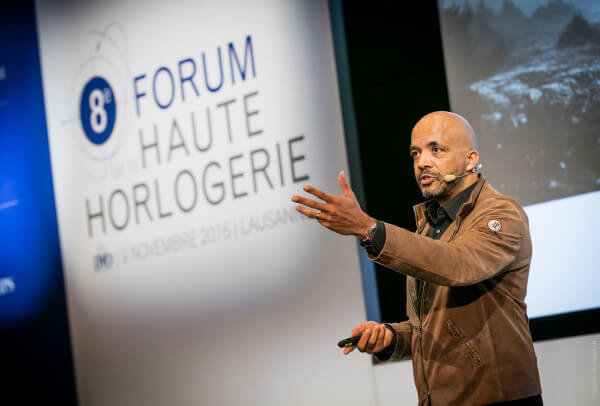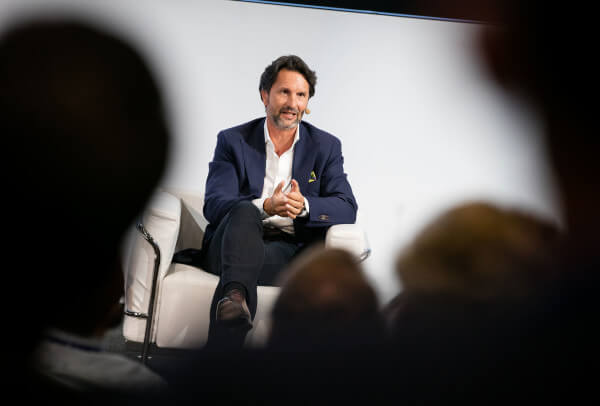As a Maison at the forefront of jewellery and watchmaking, Cartier generates sales of more than CHF 2 billion, according to a Vontobel Bank estimate. It has, according to the most recent Richemont Group interim report, skilfully navigated the downturn observed in the Swiss watch industry over the past year and a half, as chief executive Cyrille Vigneron confirmed at the 8th Forum de la Haute Horlogerie: “Cartier is doing well considering today’s turbulent environment. The brand has shown itself to be particularly resilient, notably thanks to jewellery. We are, nonetheless, confronted with a series of changes which require a response on our part. These responses are not self-evident considering the recent technology developments which have shaken up the entire luxury segment. In my view, the biggest changes today concern distribution, which is a crucial issue but one that is off-radar, taking place behind the scenes of the profession.”
The Web is turning global logistics upside-down. We are facing a volatility shock.
"Watches are too expensive"
How, indeed, does a brand reconcile a bricks-and-mortar network – which Cyrille Vigneron considers still an essential part of the purchasing experience – with new consumer behaviour upstream of that purchase. “Customers search for information online and compare prices. It’s now possible to buy anything from anywhere. Distribution networks weren’t designed for that. The Web is turning global logistics upside-down, with the additional challenge that boutique networks are based on long cycles of five years to build up and two years to scale down, if necessary. This has left us facing a volatility shock.” Nor does it end there. Already destabilised by these new consumption habits, particularly among young people, brands must also adapt to changing attitudes towards luxury.

“The distinction should be made between Europe, or the West in general, and Asia,” noted Cyrille Vigneron. “Currently all eyes are on China, a market that has changed the face of watchmaking worldwide and doubled its volume. It would be wrong to focus on anti-corruption measures and the 25% drop in the yuan, both of which have hit watch sales hard. The Chinese economy remains that of a major wealth-creating power, where the appetite for luxury and what it represents remain intact. The same cannot be said of Europe. After ten years of continuous price rises, watches have become too expensive. Young people can’t afford to buy, meaning their references are no longer those of their parents. The question facing Cartier – an adult brand coveted for styles that in many instances were launched several decades ago – is how can we capture their attention without pandering to youth culture. It’s a case of how to modernise classical music without turning it into rap!”
Sales have increased as a result, from CHF 550 to more than CHF 800 million over the past four years, and the brand continues to grow.
The right decisions, ahead of time
In a similar vein, Audemars Piguet has no intention of veering away from the values its founders upheld. These are the values, said Olivier Audemars, vice president of the board of directors, that have ensured the brand “has remained authentic, with products that speak to people.” Spurred on by the runaway success of the Royal Oak Offshore, a hyper-boosted version of the best-selling design, brand management did some soul-searching and Audemars Piguet is now reaping the benefits of decisions taken back in 2010, namely cutting back the number of references leading to reduced inventory and better turnaround at retailers; scaling back the number of points of sale for a more selective network, and limiting production to 40,000 watches to avoid overexposure, particularly in China. Sales have increased as a result, from CHF 550 to more than CHF 800 million over the past four years, and the brand continues to grow.

Perfectly symbolised by a promotional campaign designed to convey an air of authenticity, with depictions of forests swathed in mist, Audemars Piguet’s brand image has retained all its aura. “This campaign triggered something for the brand,” concluded Olivier Audemars. “It forced us to ask ourselves who we are in an age of technology when we no longer understand what’s going on, surrounded by objects without really knowing where they are made or how they work. The answer is like the rocks and fir trees of La Vallée-de-Joux. We stay real with complication watchmaking on a human scale, where art and craftsmanship meet.”
Having reached CHF 15 million in sales, Max Büsser decided the company, with its twenty-strong staff, had reached the ideal size.
Unbridled creativity
For Maximilian Büsser, owner and creative director of MB&F, watchmaking is indeed an art. Why else would his company make not watches but mechanical sculptures that give the time. It pours its creativity into two product lines, proof that the brand is ruled as much by its heart, with its Horological Machines, as by its head (the Legacy Machines). Unusually perhaps, since 2013 MB&F has refused to grow. Having reached CHF 15 million in sales and annual production of around 300 pieces, Max Büsser decided the company, with its twenty-strong staff, had reached the ideal size. “It’s not just a matter of principle,” he explained. “I knew this was the size I wanted. It’s enough to encourage creativity and keep us moving forward without being reined in by questions of productivity or profitability. This year, for example, we’re bringing out ten new models which have accounted for more than 80% of our sales over the past twelve months. Maybe I can’t give my staff big pay rises or career plans, not that we have a hierarchy anyway, but I can offer them a pleasant working environment and the pride of contributing to a unique adventure in the watchmaking microcosm.”

For sure, MB&F has been floating on a cloud these past two years, carried along by a loyal community of fans – not all of whom have the means to buy one of its watches – who follow the brand’s every move. In fact success has been such that Max Büsser has had to forsake one of his principles: “I always said we would never get into machining parts. We do have CNC machines for prototypes or touch-ups, but as far as I was concerned, that was it. And now MB&F has bought three CNC machines. It’s no secret that in watchmaking, relations with suppliers aren’t always easy, particularly for a brand such as ours that has low-volume production. But we can’t afford to overshoot delivery dates because of supplier deadlines. We don’t have the cashflow for that.” Even so, and despite a couple of hiccups in 2008 and 2009, the brand has fared well to date. It even boasts three MAD Galleries where, true to the MB&F spirit, other creative renegades exhibit their retro-futurist objects. Not all of which give the time but, hey, who cares!















